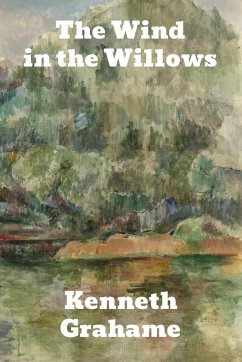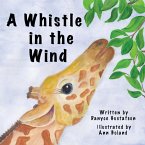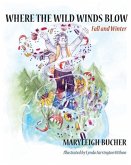The Wind in the Willows is a children's novel by Kenneth Grahame, first published in 1908. Alternately slow moving and fast-paced, it focuses on four anthropomorphised animals in a pastoral version of Edwardian England. The novel is notable for its mixture of mysticism, adventure, morality and camaraderie, and celebrated for its evocation of the nature of the Thames Valley. In 1908, Grahame retired from his position as secretary of the Bank of England. He moved back to Berkshire, where he had lived as a child, and spent his time by the River Thames doing much as the animal characters in his book do - as the book says, "simply messing about in boats" - and expanding the bedtime stories he had earlier told his son Alastair into a manuscript for the book. The novel was in its 31st printing when playwright A. A. Milne adapted part of it for the stage as Toad of Toad Hall in 1929. Almost a century later, it was adapted again for the stage as a musical by Julian Fellowes. In 2003, The Wind in the Willows was listed at number 16 in the BBC's survey The Big Read. Kenneth Grahame was born on 8 March 1859 in Edinburgh. When he was 5, his mother died from puerperal fever, and his father, who had a drinking problem, gave the care of his four children over to their grandmother, who lived in Cookham Dean in Berkshire. There they lived in a spacious but dilapidated home, "The Mount", in extensive grounds by the River Thames, and were introduced to the riverside and boating by their uncle, David Ingles, curate at Cookham Dean church.[2] At Christmas 1865 the chimney of the house collapsed and the children moved to Fern Hill Cottage in Cranbourne, Berkshire. In 1866, their father tried to overcome his drinking problem and took the children back to live with him in Argyll, Scotland, but after a year they returned to their grandmother's house in Cranbourne, where Kenneth lived until he entered St Edward's School, Oxford in 1868.[3] During his early years at St. Edwards the boys had freedom to explore the old city with its quaint shops, historic buildings, and cobbled streets, St Giles' Fair, the idyllic upper reaches of the River Thames, and the nearby countryside.[4] Grahame married Elspeth Thomson in 1899; they had only one child, a boy named Alastair (whose nickname was "Mouse") born blind in one eye and plagued by health problems throughout his life.[5] When Alastair was about four years old, Grahame would tell him bedtime stories, some of which were about a toad, and when he holidayed alone he would write further tales of Toad, Mole, Ratty and Badger in letters to Alastair.[3] In 1908 Grahame took early retirement from his job at the Bank of England and moved with his wife and son to an old farmhouse in Blewbury, where he used the bedtime stories he had told Alastair as a basis for the manuscript of The Wind in the Willows. A number of publishers rejected the manuscript. It was published in the UK by Methuen and Co., and later in the US by Scribner. The critics, who were hoping for a third volume in the style of Graham's earlier works; The Golden Age and Dream Days, generally gave negative reviews.[3] The public loved it, however, and within a few years it sold in such numbers that many reprints were required. In 1909, then sitting US President Theodore Roosevelt wrote to Grahame to tell him that he had "read it and reread it, and have come to accept the characters as old friends








